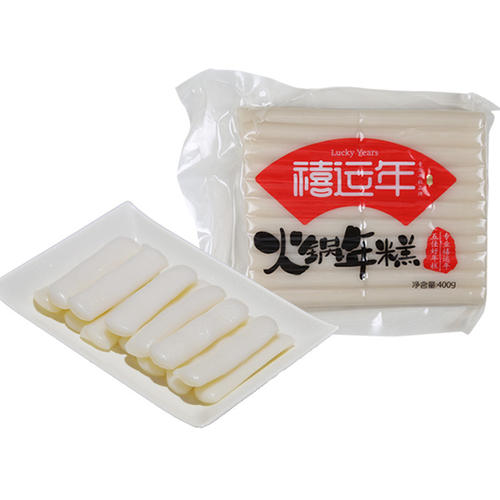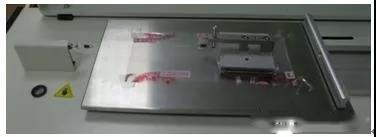Source: Link Testing Instruments Co .,Ltd.

The coefficient of friction is a physical quantity that characterizes the slipperiness of packaging materials. It is divided into two types: dynamic friction coefficient and static friction coefficient. It is an important testing index for packaging materials. The friction coefficient is directly related to the smooth progress of the packaging process. If the friction coefficient of the package is too small or uneven, it is easy to cause the packaging roll film to slip, run off when the bag is rolled, or the stacking material is unstable, resulting in misalignment; if the friction coefficient is too large, it is easy to cause the packaging roll film Problems such as poor rolling or poor opening of the packaging bag when filling the contents. Therefore, a suitable friction coefficient is of great significance to the improvement of production efficiency.
Nian Gao is a traditional rice cake in Southeast Asia. It is mainly made of viscous rice or rice noodles. It is a seasonal food in the Chinese New Year. It has two colors of white and yellow. It symbolizes gold and silver. Life is getting better and better. In this paper, by simulating the friction process of the packaging material itself when the film roll is drawn, the friction coefficient of the inner surface of the rice cake packaging film to the outer surface is detected.
Testing methods and instrument
Most rice cakes are packaged in plastic composite film. At present, the Chinese testing methods for the friction coefficient of flexible plastic packaging mainly refer to GB 10006-1988 "Method for Measuring the Friction Coefficient of Plastic Films and Sheets". In this test, the Link Testing friction coefficient tester LTCOF-05A was used to test the friction coefficient of the rice cake packaging film samples.
Test principle: The friction coefficient refers to the ratio of the friction between two surfaces in contact with the vertical pressure acting on one of the surfaces. This equipment is designed according to this principle. The device applies vertical pressure to the two films through a slider of known mass, and tests the friction value of the two films from relatively static to relative sliding, thereby obtaining the static friction coefficient and the dynamic friction coefficient between the two contact surfaces.
Test sample and test process
Test sample: A plastic composite film roll film for packaging rice cakes of a certain brand.
Experimental procedure:
(1) Cut 3 specimens of 8 cm × 20 cm and 63 mm × 100 mm from the surface of the sample roll film to form 3 sets of test specimens.
(2) Take one of the 8 cm × 20 cm specimens, with the hot cover facing up, paste or fix it on the horizontal test bench.

(3) Take one of the 63 mm × 100 mm specimens and fix it on the slider with the non-heated cover facing outward, that is, the hot cover is in direct contact with the slider.
(4) Put the sliding block with the sample fixed on the surface of the sample glued on the horizontal test bench without impact. When placing it, ensure that the test system is not stressed and the traction direction of the sample is parallel to the sliding direction. Do not touch the test surfaces of the two samples with your hands during the entire cutting and loading process, and ensure that the test surfaces of the samples are free of fingerprints, dust, etc.

(5) Set the test speed, test stroke and other parameter information, click the test option, and the test will start.
(6) After the two samples are stationary for 15 s, they begin to move relative to each other. The equipment automatically records the force value changes during the test, so as to calculate the static friction coefficient and the dynamic friction coefficient of the sample.
(7) Repeat steps (2) ~ (6) until the test of the 3 sets of samples is completed.
Test results and analysis
| Results | Sample 1 | Sample 2 | Sample 3 | Average |
| Static friction | 0.204 | 0.196 | 0.200 | 0.200 |
| Dynamic friction | 0.167 | 0.160 | 0.163 | 0.163 |
The coefficient of friction is an important performance index for flexible plastic packaging.
For more details please visit www.linktesting.org